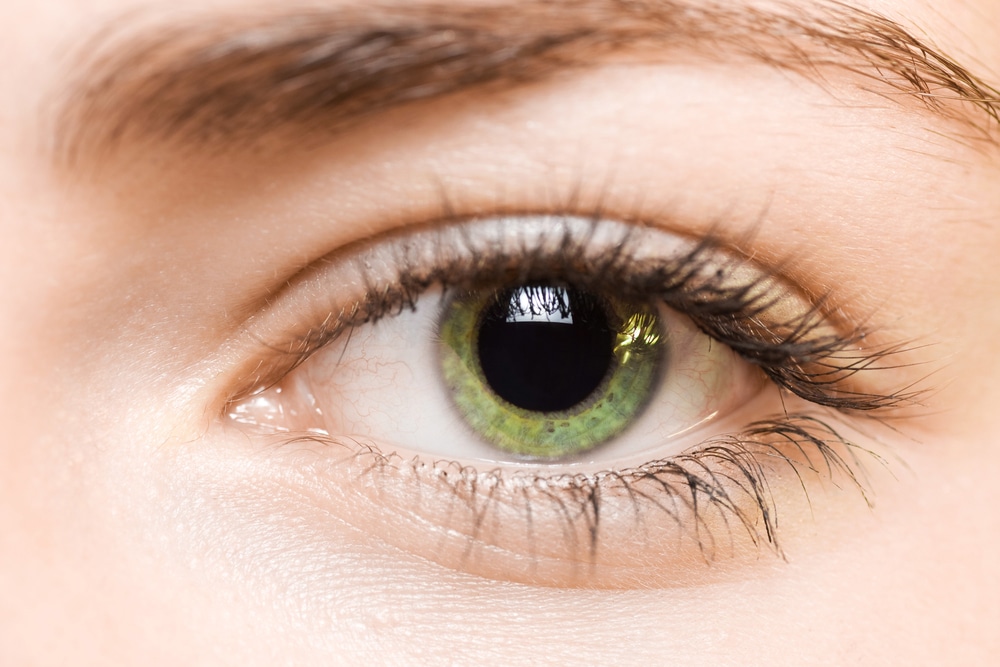
Keratoconus is an eye condition where the cornea thins and weakens over time. As a result, the cornea forms a cone shape and bulges outward.
The cornea’s irregular shape prevents the light entering your eye from properly focusing on the retina. In addition, the irregular cornea can distort the light, causing considerable vision impairment.
While the eye condition often appears during the late teens and early twenties, it can be diagnosed later in life in some cases. Keratoconus primarily affects both eyes, but sometimes it only develops in one eye.
Where both eyes have keratoconus, each eye may experience varying levels of severity. Keep reading to learn more about what keratoconus is!
Symptoms of Keratoconus
The most common symptoms of this progressive eye condition are blurred vision and mild to moderate significant vision distortion. Other symptoms are:
- Halos and glares around lights
- Increased sensitivity to light
- Nearsightedness
- Eyestrain
- Poor night vision
- Eye irritation
- Frequent prescription changes
- Double vision
Causes of Keratoconus
The cause of keratoconus is unknown, but certain factors increase your risk, including:
- Age
- Family history of keratoconus
- Constant eye inflammation
- Chronic and vigorous eye rubbing
- Certain underlying disorders
Keratoconus Treatment
Treatment of keratoconus will depend on its severity. Some of the treatment options are:
Prescription Glasses
During the early stages of keratoconus, glasses can be used to correct distorted or blurry vision. However, your eye doctor may continue changing your prescription to stronger lenses as the shape of your cornea becomes more irregular.
Contact Lenses
Eye doctors also use many different types of contact lenses to address keratoconus. They include:
Soft Contact Lenses
Soft contacts can correct distorted or blurry vision. The lenses are effective if you have mild to moderate keratoconus.
Rigid Gas Permeable Lenses
Rigid gas-permeable of RGP contacts are made from a firm material that allows oxygen to flow through it to your eyes. RGP lenses protect your eye health by enabling them to breathe.
These contacts provide excellent vision correction for patients with advanced keratoconus. Some patients, however, find it hard to wear RGP lenses throughout the day because of their rigid material.
Piggyback Contact Lenses
For some people, fitting an RGP lens over their cone-shaped cornea may prove uncomfortable. The doctor may recommend piggybacking contact lenses instead.
When it comes to piggyback contacts, a soft lens is placed over the eye, then an RGP lens over the soft contact lens. The soft lens provides comfort and offers protection to the compromised corneal surface.
This decreases the risk of further damage from RPG lens rubbing. On the other hand, the RPG lens delivers sharp, crisp vision.
Intacs
These tiny plastic rings are surgically inserted into the cornea to flatten its curvature, stop further bulging, and improve your vision.
Corneal Cross-Linking
Corneal cross-linking or CXL is a procedure eye doctors perform to delay or avoid a corneal transplant. During the procedure, your surgeon applies riboflavin or vitamin B drops into your eye and then shines UVA light to activate the eye drops.
CXL helps increase the number of bonds between your collagen fibers, strengthen your cornea, and improve your vision.
Corneal Transplant
If other treatment options don’t work, you may need a corneal transplant. A corneal transplant involves replacing part or all of your cornea with healthy donor tissue.
Even after the surgery, you might still require contacts or glasses to see clearly.
Prevent Vision Loss from Keratoconus
The best way to detect keratoconus is through routine eye exams. The doctors at Colorado Eye Consultants can catch the eye condition and provide timely treatment to preserve your sight.
Do you want to learn more about keratoconus? Schedule an appointment at Colorado Eye Consultants in Littleton, CO, today!

